#The Transcontinental Railroad
Explore tagged Tumblr posts
Photo
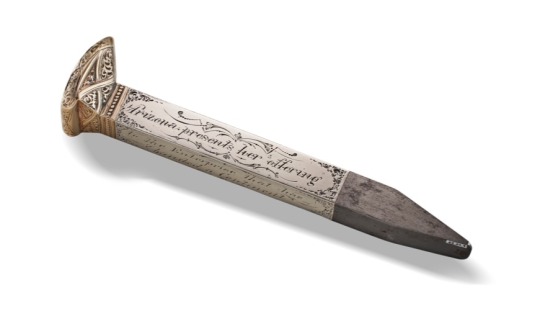
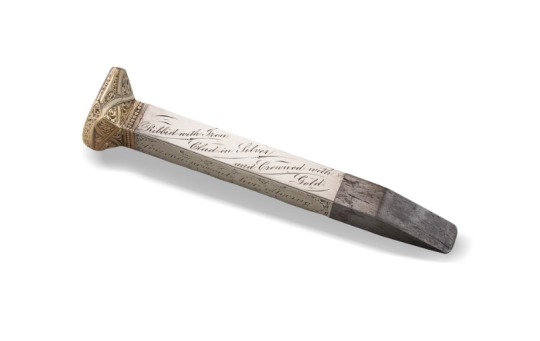


A STEEL RAILROAD SPIKE CLAD IN GOLD AND SILVER USED IN THE CEREMONY MARKING THE COMPLETION OF THE TRANSCONTINENTAL RAILROAD, 10 MAY 1869 Unknown, but possibly G.W. Laird, San Francisco, 1869
Driving the last spike. The Arizona Spike—presented at the ceremony marking the completion of the Transcontinental Railroad. Commissioned and presented by Arizona Territorial Governor Anson P.K. Safford, this was one of four ceremonial spikes used to mark the "meeting of the rails" at Promontory Point, Utah on 10 May 1869. Inscribed on the shaft: "Ribbed with iron, clad in silver and crowned with gold Arizona presents her offering to the enterprise that has banded a continent, dictated a pathway to commerce. Presented by Governor Safford."
135mm (long); 25 x 20mm (head); 11 x 11mm (shaft).
#Railroad Spike 1869#The Transcontinental Railroad#The Arizona Spike#Ceremonial Spike#Meeting of the Rails#Governor Anson P.K. Safford#steel#gold and silver#history#history news#railroad history
271 notes
·
View notes
Text
The US railroad is transcontinental?? Congrats on its transition!!
857 notes
·
View notes
Text
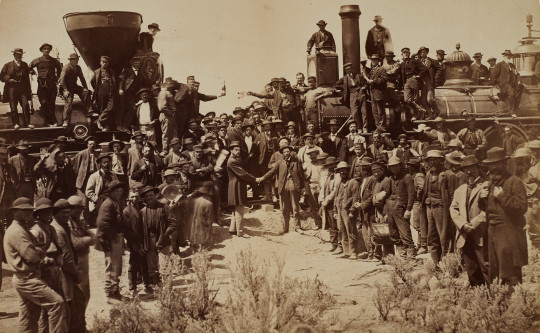
Andrew Joseph Russell,
Golden Spike Ceremony, Promontory Point, Utah May 10, 1869,
Completion of the First Transcontinental Railroad. At center left, Samuel S. Montague, Central Pacific Railroad, shakes hands with Grenville M. Dodge, Union Pacific Railroad (center right).
Albumen silver print, mounted on board,
Image/sheet: 9 x 121⁄4 in. (22.8 x 31.1 cm.)
Courtesy: Christie's
#art#photography#black and white#vintage photography#history#andrew joseph russell#golden spike#american history#railroad#railway#utah#1869#christie's#transcontinental#union pacific railroad
12 notes
·
View notes
Text

Elephant Rock at Monument Point
This can be found along the former roadbed of the Central Pacific. The timetable lists the locale simply as “Monument”. We are twenty-one miles from Promontory Summit here.
Image by Richard Koenig; taken September 7th 2013.
#railroadhistory#railwayhistory#centralpacific#firsttranscontinentalrailroad#transcontinental railroad#monumentutah#utah
25 notes
·
View notes
Text
are transphobes mad that it’s the TRANScontinental railroad and not the CIScontinental railroad?
#lgbtq+#transgender#trans#transmasc#transcontinental railroad#Sorry I’m bored out of my mind taking history rn#So you guys get my bad jokes#the rats say something
5 notes
·
View notes
Text
currently reading After Promontory: 150 Years of Transcontinental Railroading
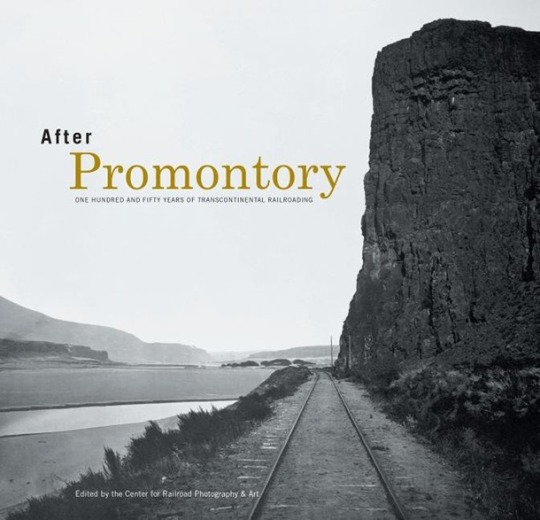
#after promontory#us history#transcontinental railroad#trains#currently reading#currently reading: after promontory#<<<for the blacklist :)
9 notes
·
View notes
Text
Man full affection to Fata Morgana, but this door set in post-civil war America is TESTING ME. In that...I know too much, and they know too little.
#'this transcontinental railroad's never gonna work Jacopo!'#me: It was literally finished the year this door takes place. Even by the year before it was considered a fait accompli#also me: she would not be fucking wearing her hair down
14 notes
·
View notes
Note
Favorite California history books? Any interesting books on California governors?
First of all, anything by Kevin Starr is a good place to start if you're looking for books on California history. I particularly recommend California: A History (BOOK | KINDLE) for an overall history and Coast of Dreams: California on the Edge, 1990-2003 for a more modern perspective.
Jim Newton's book Man of Tomorrow: The Relentless Life of Jerry Brown (BOOK | KINDLE) is probably the best biography I've read about one of California's most influential Governors. Lou Cannon's Governor Reagan: His Rise to Power (BOOK | KINDLE) is an excellent look at the future President's early political career and eight years in Sacramento.
Mark Arax has written some really insightful books about California's history, culture, and politics, especially West of the West: Dreamers, Believers, Builders, and Killers in the Golden State (BOOK | KINDLE), and The Dreamt Land: Chasing Water and Dust Across California (BOOK | KINDLE).
While they aren't solely about California, I'd also suggest these books, which help tell some of the more important aspects of the story of California: Kearny's March: The Epic Creation of the American West, 1846-1847 (BOOK | KINDLE) by Winston Groom; The Crusades of Cesar Chavez: A Biography (BOOK | KINDLE) by Miriam Pawel; and, Cesar Chavez: Autobiography of La Causa (BOOK | KINDLE) by Jacques E. Levy.
There's another question in my inbox asking for book suggestions about Sacramento, so I'll include those in this answer. Sacramento: An Illustrated History, 1839-1874: From Sutter's Fort to Capital City by Thor Severson is an older book, but really solid about Sacramento's early history. Fool's Gold: A Biography of John Sutter by Richard Dillon, John Sutter: A Life on the North American Frontier by Albert L. Hurtado, and The Associates: Four Capitalists Who Created California (BOOK | KINDLE) by Richard Rayner are good biographies about some of the most important founders of Sacramento.
And you can't tell the story of Sacramento or California (or, really, the United States) without the construction of the transcontinental railroad, so I'd also highly recommend Nothing Like It in the World: The Men Who Built the Transcontinental Railroad, 1863-1869 (BOOK | KINDLE) by Stephen Ambrose, and Empire Express: Building the First Transcontinental Railroad (BOOK | KINDLE) by David Haward Bain.
#History#Books#Book Suggestions#Book Recommendations#California#California History#Sacramento#Sacramento History#Jerry Brown#Governor Brown#Ronald Reagan#Governor Reagan#Transcontinental Railroad#John Sutter#Mark Arax#Kevin Starr
18 notes
·
View notes
Text

"LOCOMOTIVE OF C.P.R. IMPERIAL LIMITED IS THROWN INTO LAKE," Winnipeg Tribune. November 21, 1913. Page 1. ---- Fireman O'Connor, of Schrieber Drowned When Train Hit Rock Near Angler, Ont. ---- ENGINEER SAVED LIFE BY JUMPING --- Official Report Says That Only Baggage Car Left the Track and Mail and Passenger Cars Were Unscathed ---- While tearing along the eye-brow of a beetling cliff that overhangs Lake Superior, 178 miles east of Fort William, at 2 a.m. this morning, the first section of the C.P.R, westbound Imperial Limited, crashed into a gigantic boulder which had hurtled down on to the track from far up the precipitous cliff side. The engine was hurled from the steel into the charm of waters be neath, carrying in its mangled mass to a watery grave beneath, the living form of Fireman Ernest O'Connor, of Schreiber. The engineer escaped miraculously as the train struck, but his warning cry to his fellow workman was too late.
Luckily the engine broke away away from the rest of the train ere it plunged into the murky waters fur below. Three cars only left the track and the train held the foremost from following the engine into the lake which surged angrily fifty feet beneath. No one else was injured and in any case the death rate could not have been high as the train was composed only of transcontinental mail, express and baggage with a first class passenger couch at the rear occupied by but one man. There were. however, besides the engine crew, a conductor, two brakemen, a mail clerk and baggage and express agents on the train.
A Glancing Impact The impact of the train against the boulder was terrific, but its full force was not sustained by the cars owing to the fact that the force of the collision was sustained by the side of the train facing the cliff. This forced the engine over the lower cliff, but probably saved the whole whole train from being w reduced to splinters and being hurled in fragments against the rock on the one side or into the lake on the other. Had this happened many more fatalities must have resulted. Had the accident befallen the second section which was careening through the darkness a hundred miles behind and had the boulder been dead centre on the track one of the worst disasters in the history of Canadian railroads would have occurred.
A Wild Spot The section of the track in which the disaster occurred is one of the wildest and most picturesque on the whole Canadian Pacific railway through mountains, barren lands or prairies. prairie The track is built on a ledge of rock half-way up the cliff side. On the one side towers and frowns a solid wall of rock rudely torn by dynamite, while on the other is a sheer descent of fifty feet into the murky waters of of the largest inland sea in the world. The name of the town near which the accident occurred is Coldwell and it is on the Trans-Continental.
#schreiber#northwestern ontario#lake superior#transcontinental railroad#derailment#train derailment#industrial accident#fatal accident#canadian pacific railway#railway workers
3 notes
·
View notes
Text
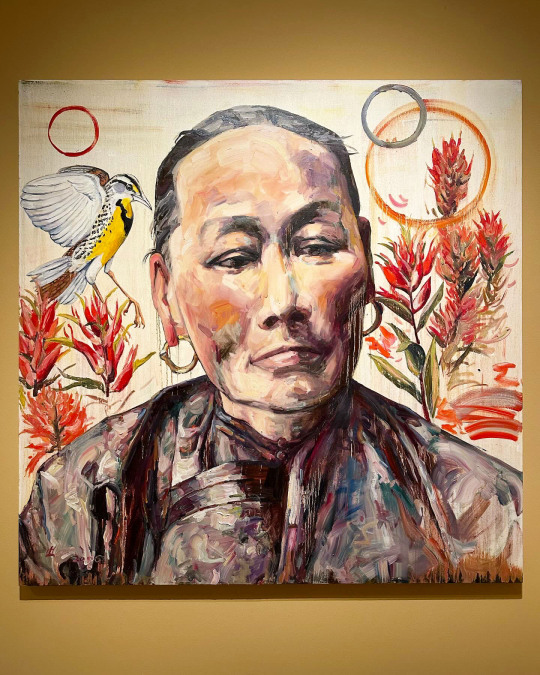
(Hung Liu “Portrait of China Mary”, 2006, Oil on canvas)
Currently at The James Museum in St. Pete, is From Far East to West: The Chinese American Frontier, an informative show that includes many beautiful paintings. There’s so much history in America that often doesn’t get taught in school. This is a great opportunity to learn about this immigration story through artwork as well as text.
From the museum about the exhibition-
While European American settlers gradually pushed the United States frontier westward throughout the 1800s, the West coast of the country was developing independently as well. Accelerated by the discovery of gold mid-century, the population boom included Chinese immigrants who crossed the Pacific Ocean to California.
Most 19th century Chinese immigrants came to their new country from the coastal Canton region (province of Guangdong today) in southeastern China. Starting over on a different continent away from familiar surroundings and culture would be challenging, but for many decades anti-Chinese hostility and exclusion laws made settling in the United States even more difficult. The achievements of Chinese immigrants paved a path for future generations and are a testament to strength and perseverance.
The foundation for the exhibition highlights narratives of Chinese America from the 1850s to the 1930s. The paintings-all created by Chinese Americans in the 21st century-reflect inspiration from this history. The painters are also fueled by their own, more recent immigration stories to the United States after China’s Cultural Revolution (1966-1976) and their rigorous art training in the government-sponsored movement of Socialist Realism. After China opened to the rest of the world in the late 1970s, many Chinese artists-like Mian Situ, Jie Wei Zhou, Benjamin Wu, Hung Liu, and Z.S. Liang, all featured here were inspired to immigrate to the United States in search of greater opportunity.
Here, these artists’ historical interpretations speak to culture, identity, community, and resilience. Related objects and ephemera from the period support these stories. From the Gold Rush to Angel Island, this exhibition reveals often overlooked but significant contributions and perspectives of Chinese immigrants that deepen our understanding of U.S. history.

Hung Liu “Dandelion with Small Bird”, 2017 Mixed media
About the above painting from the museum-
Dandelions and their fluffy seed pods can be found anywhere in the world and thrive wherever they land. Their migratory nature allows them to survive a journey across vast lands even across oceans and take root anywhere in the world. For Liu, the dandelion represents her own tenacity and ability to thrive in the face of adversity.
The dandelions, fragile in nature and tattered by the lightest breeze, mimic how images, and personal narratives, too, can be scattered by time and the winds of history —as well as by the rhythms of feast and famine … –Hung Liu
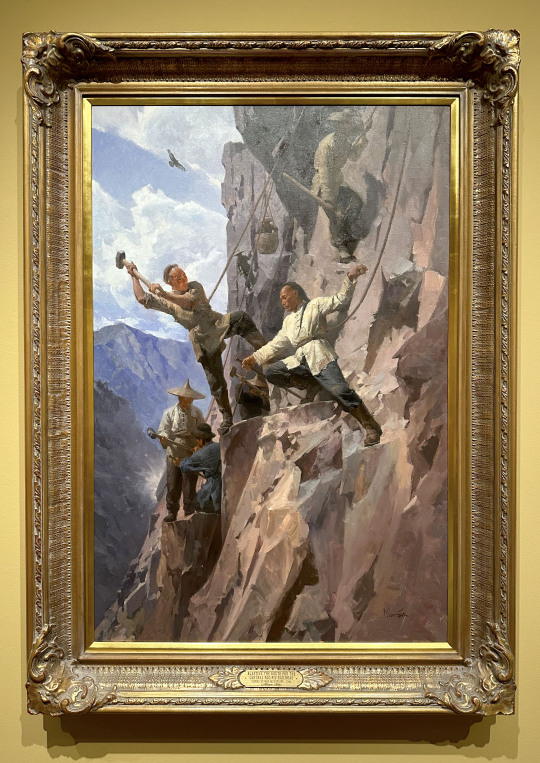
Mian Situ “Blasting a Route Through the Sierra Nevada, 1865, Central Pacific Railroad”, 2018, Oil on canvas

Mian Situ “The Gold Seekers , Chinese Camp, 1850”, 2015, Oil on canvas

Jie Wei Zhou “Dragon Parade”, 2012, Oil on Linen
This exhibition is on view until 1/28/24.
#Art#The James Museum#Hung Liu#Art Shows#Chinese American History#Mian Situ#Chinese Americans#Florida Art Shows#Gold Rush#Jie Wei Zhou#Z.S. Liang#Benjamin Wu#St. Pete Art Shows#The James Museum of Western and Wildlife Art#Historical Painting#History#Immigration#Painting#Transcontinental Railroad
3 notes
·
View notes
Text
What if the sole survivor actually sucked really bad and helped strengthen the minute men only to join the nuka world raiders bc it sounded fun the second the opportunity arose
#well I for one think it’s funny#my fallout cast:#minute men general and lone survivor#most traumatized teenager in new Vegas becomes mailman. gets shot.#new California felon commits more felonies but like. he’s a good guy.#two cultist raiders reinvent the transcontinental railroad#teenager leaves vault 76. becomes mothman cult leader.#woman leaves vault 76. attempts to rebuild West Virginia from the ground up.#and this fuckin guy
2 notes
·
View notes
Photo
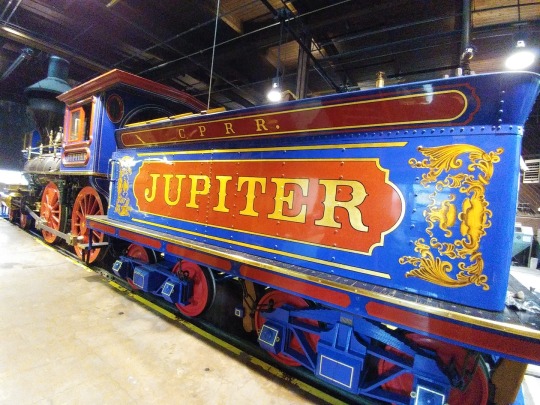
Central Pacific No. 60 Locomotive
The Jupiter was a 4-4-0 steam locomotive owned by the Central Pacific Railroad. It made history when it joined the Union Pacific No. 119 at Promontory Summit, Utah, during the Golden Spike ceremony commemorating the completion of the First transcontinental railroad in 1869.
#locomotives#historic locomotives#historic moments#transcontinental railroad#central pacific railroad#jupiter#trains#visit promontory#travel america#travel photography#traveling#visit utah#utah attractions#muttball
4 notes
·
View notes
Text
Exploring the Impact of the Transcontinental Railroad Through Music and History
The Legacy of the Transcontinental Railroad The completion of the transcontinental railroad stands as one of the monumental achievements in American history. In 1850, the United States boasted a mere 10,000 miles of railroad track; by 1900, this figure had skyrocketed to an expansive 215,000 miles, enabling trains to transport people, goods, and ideas across the vast expanse of the nation from…
#American history#cultural diversity#immigration laws#industrialization#labor history#multimedia storytelling#musical heritage#Native American impact#railroad construction#Rhiannon Giddens#Silkroad Ensemble#Swannanoa Tunnel#Transcontinental Railroad
0 notes
Text
A Mournful Whistle Recalls the Storied Past of a Massive Steam Locomotive
If you grew up hoping for a return wave from a train engineer or the brakeman on the caboose, as I did, you might want to make a special effort to view this historic steam locomotive on its 2024 tour. Or at least read about its history.
#Big Boy 4014#Freight Trains#Steam Locomotive#Trains#Transcontinental Railroad#Union Pacific Railroad
0 notes
Video
youtube
Cronyism in America: The Nation’s First Big Business | Patrick Newman
#US History#Economic history Cronyism#Government Regulation#Progressive era#Transcontinental Railroads
0 notes
